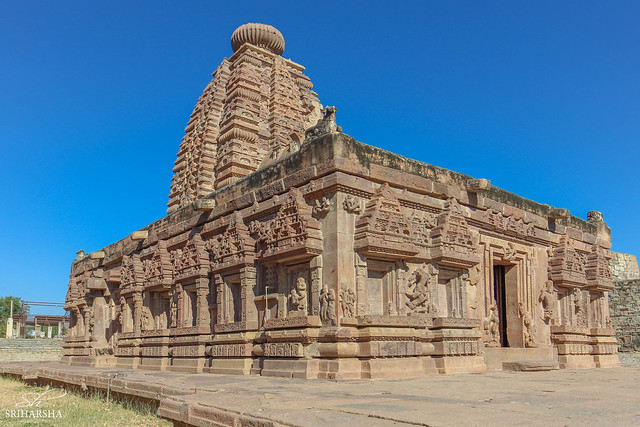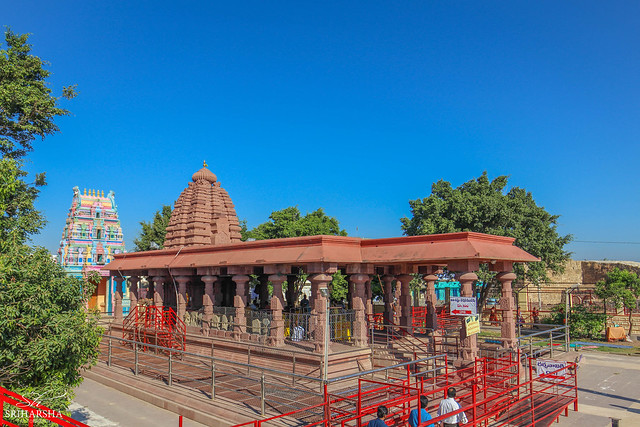
Alampur in Mahabubnagar Dist is an ancient temple town on the banks of the Tunghbhadra. It has one of the oldest temples in this part of the country and an architectural marvel steeped in History.

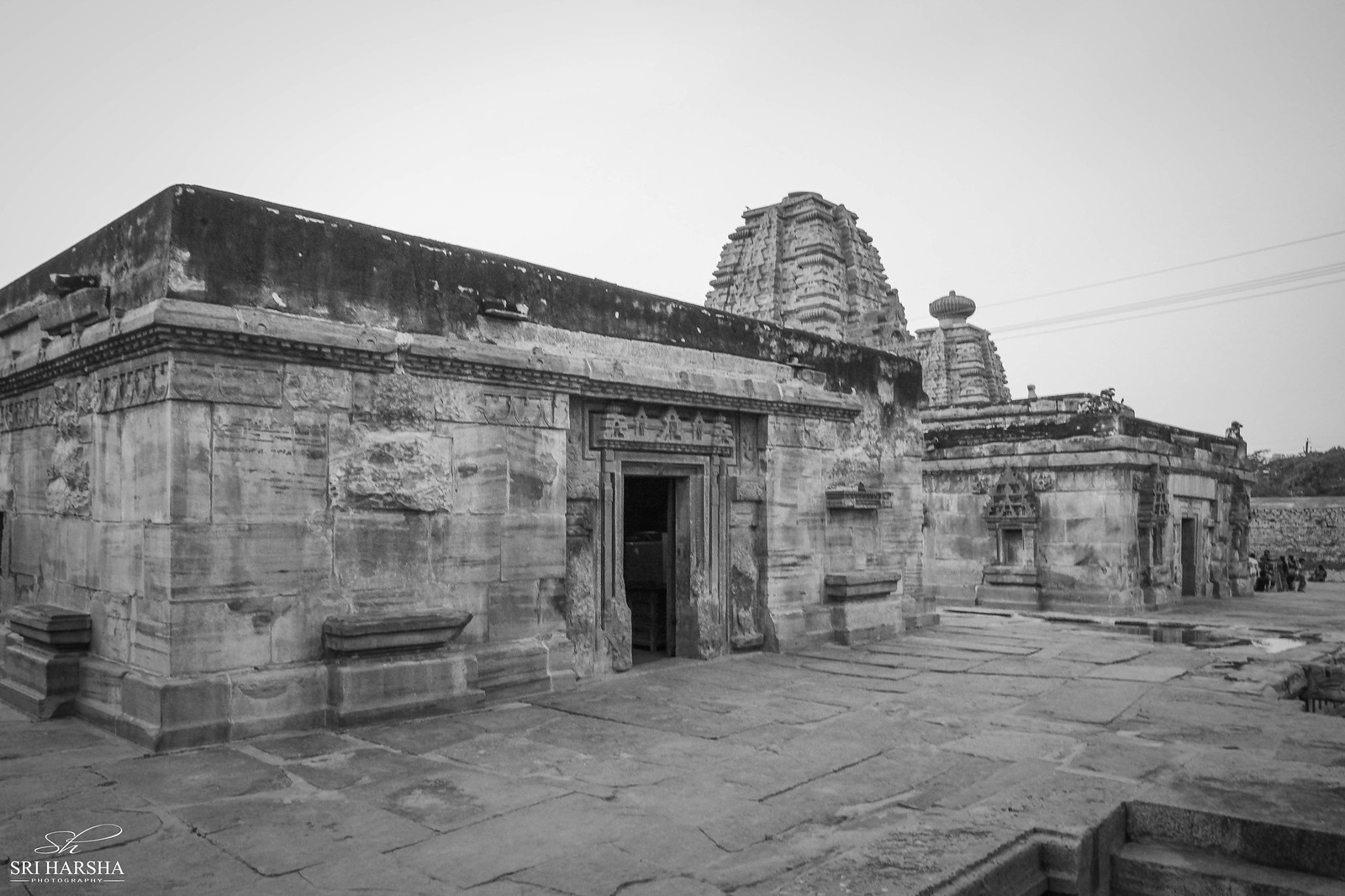
Alampur is the meeting point of the sacred rivers Tungabhadra and Krishna and is referred to as Dakshina Kashi(also known as Navabrahmeshwara Theertha) and the Western Gateway of Srisailam.
There are a total of 9 temples called Navabrahma all dating to the 7th Century and the town is home to a very rich heritage and culture. Various stone inscriptions take us back in time and outline the periodicity and the glory of this unique architecture and intricate carvings.
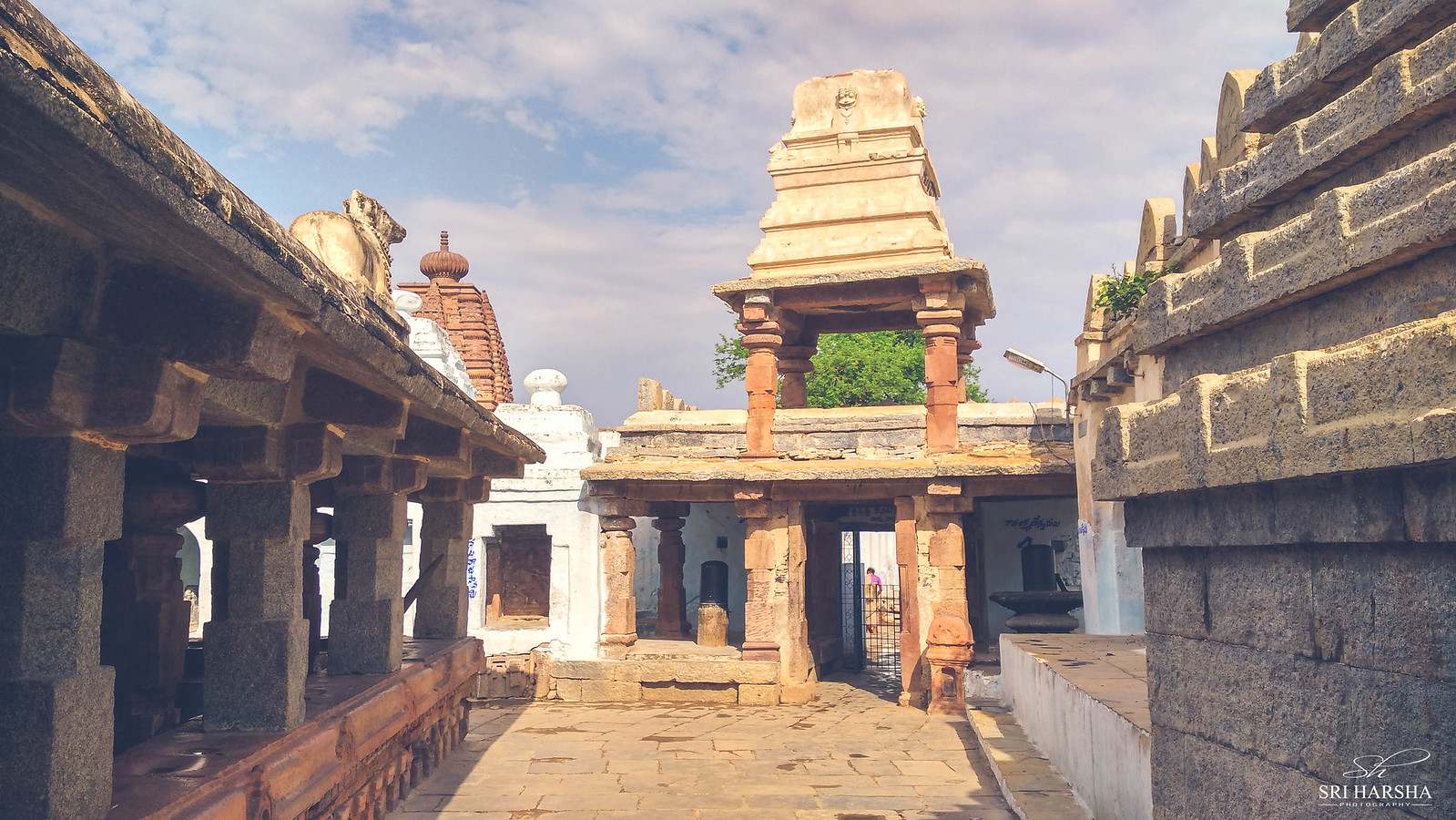
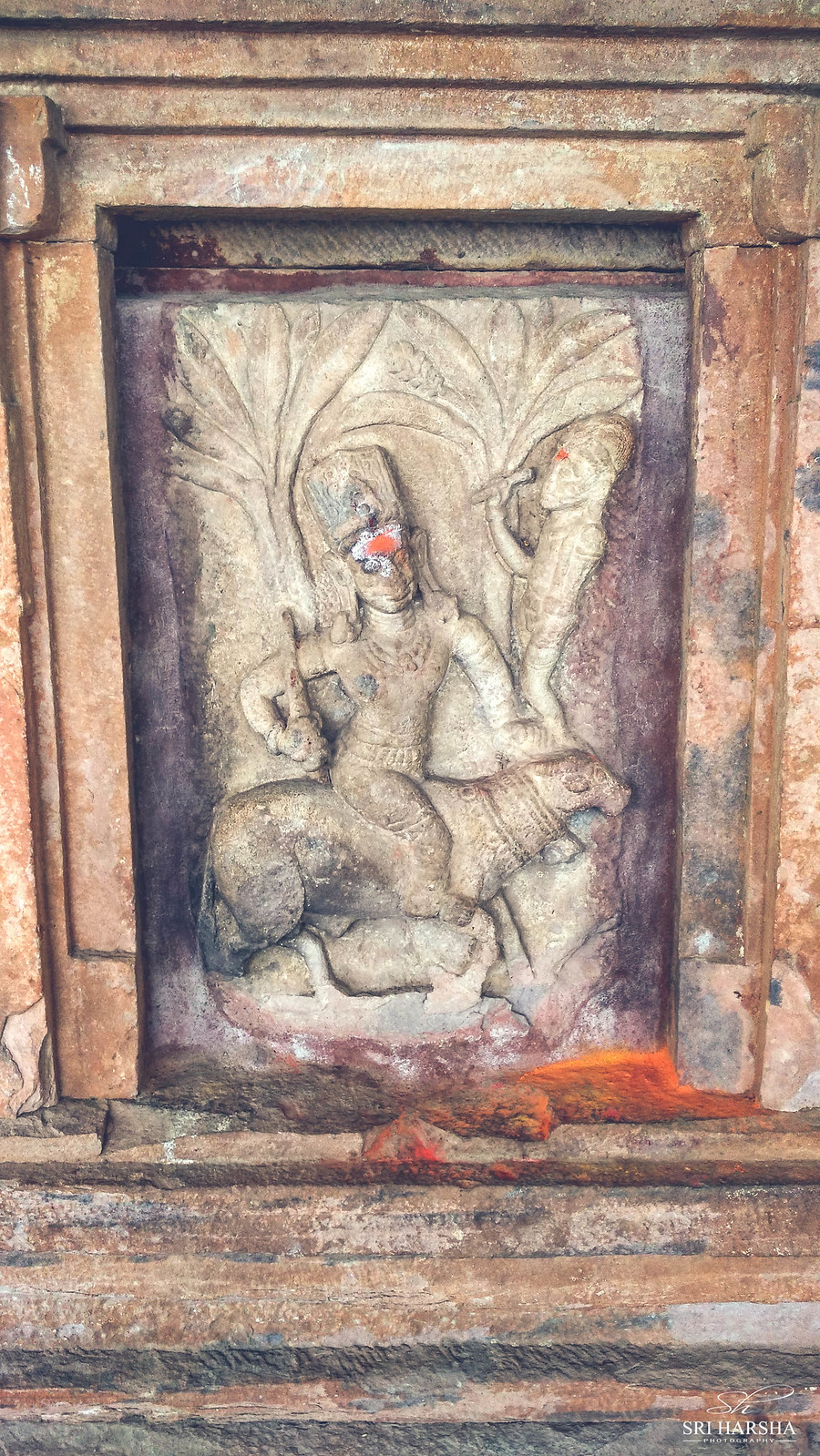
The Nava Bhramma temples are Taraka Bhramma, Swarga Bhramma, Padma Bhramma, Bala Bhramma, Garuda Bhramma, Kumara Bhramma, Arka Bhramma, Vira Bhramma and the Vishwa Bhramma. These temples are all enclosed in a courtyard on the left bank of the river Tungabhadra.
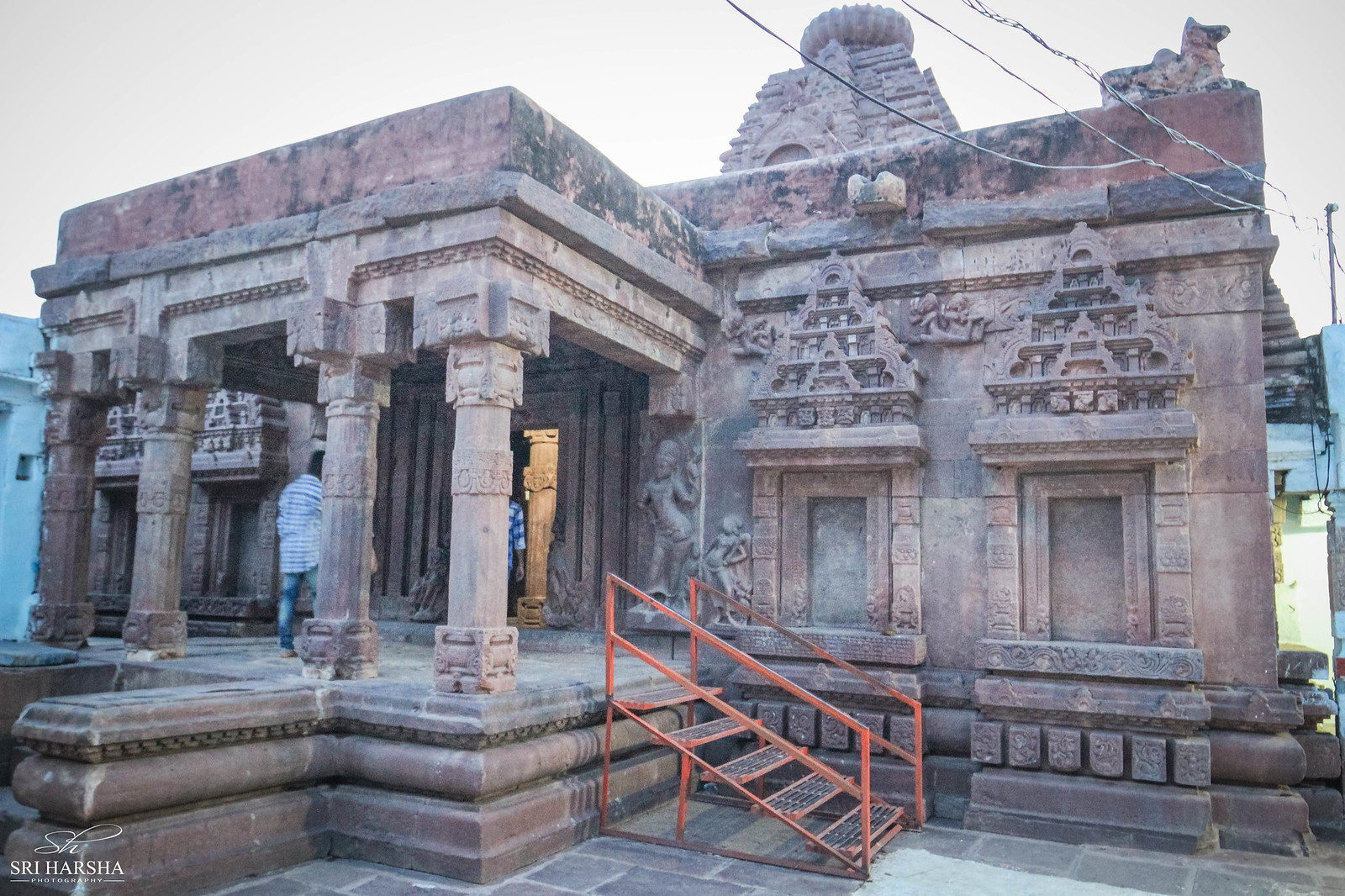

The Bala Bhramma temple is the principal shrine of worship. It dates back to the year 702 CE – per the inscriptions seen here. Shivaratri is celebrated in great splendour here.
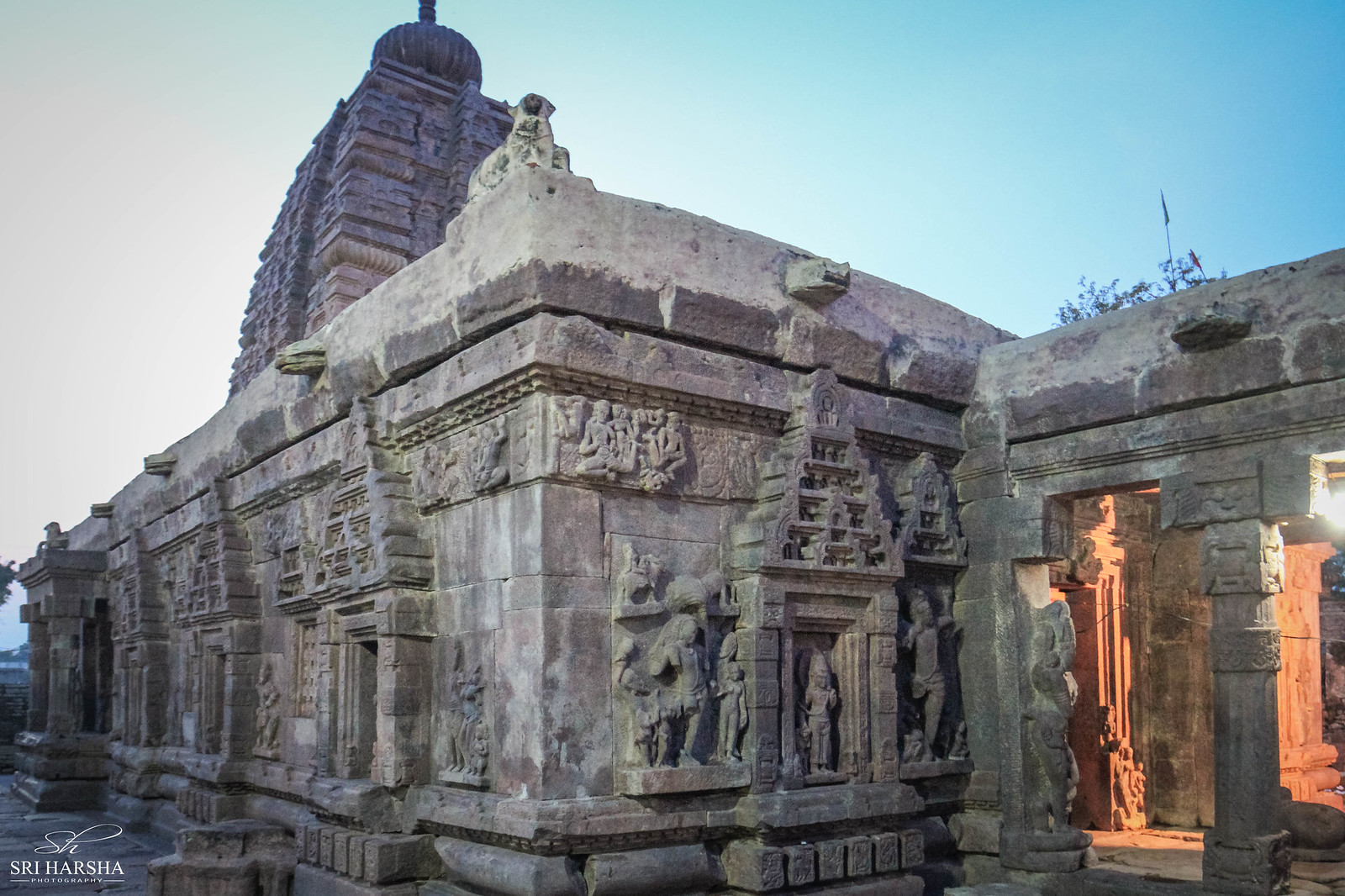
The Taraka Bhramma temple is partly in ruins, and it has no image in the sanctum. It bears telugu inscriptions from the 6th-7th century CE. The Swarga Bhramma temple with an imposing tower is considered to be among the finest in Alampur, and is an excellent specimen of Chalukyan architecture and sculpture. It contains several sculptures in bas relief, and it dates back to the end of the 8th century.


The Padma Bhramma temple partly in ruins, contains a Shivalingam of clear stone with mirror like finish. The Viswa Bhramma temple is among the most artistic of the Nava Bhramma temples. The sculptural work here depicts scenes from the epics.
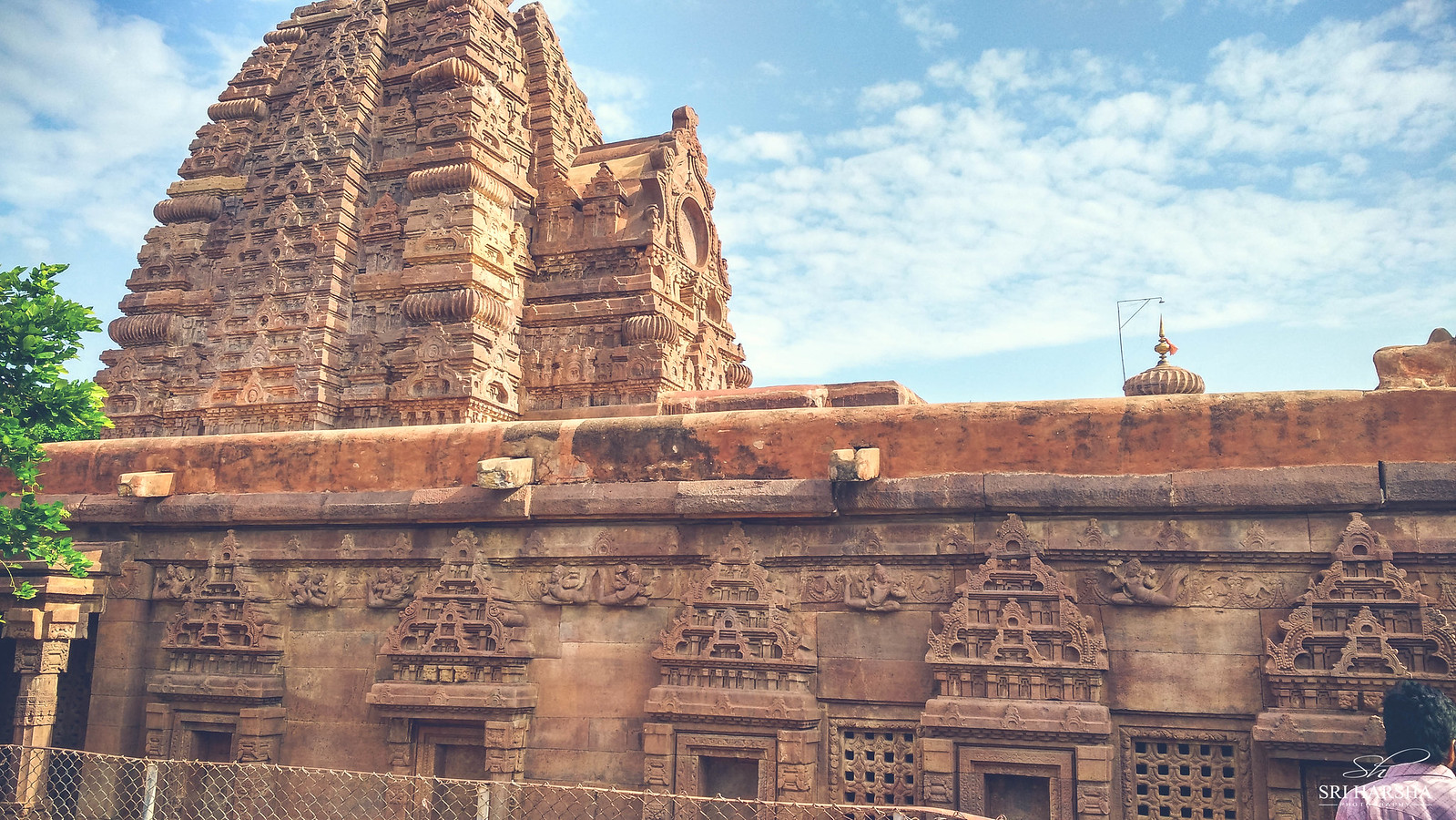
Also in the enclosed courtyard is located the Suryanarayana temple, dating back to the 9th century. This temple has bas reliefs representing the incarnations of Vishnu. There is also a Narasimha temple with inscriptions from the period of Krishna Deva Raya of the Vijayanagar Empire.
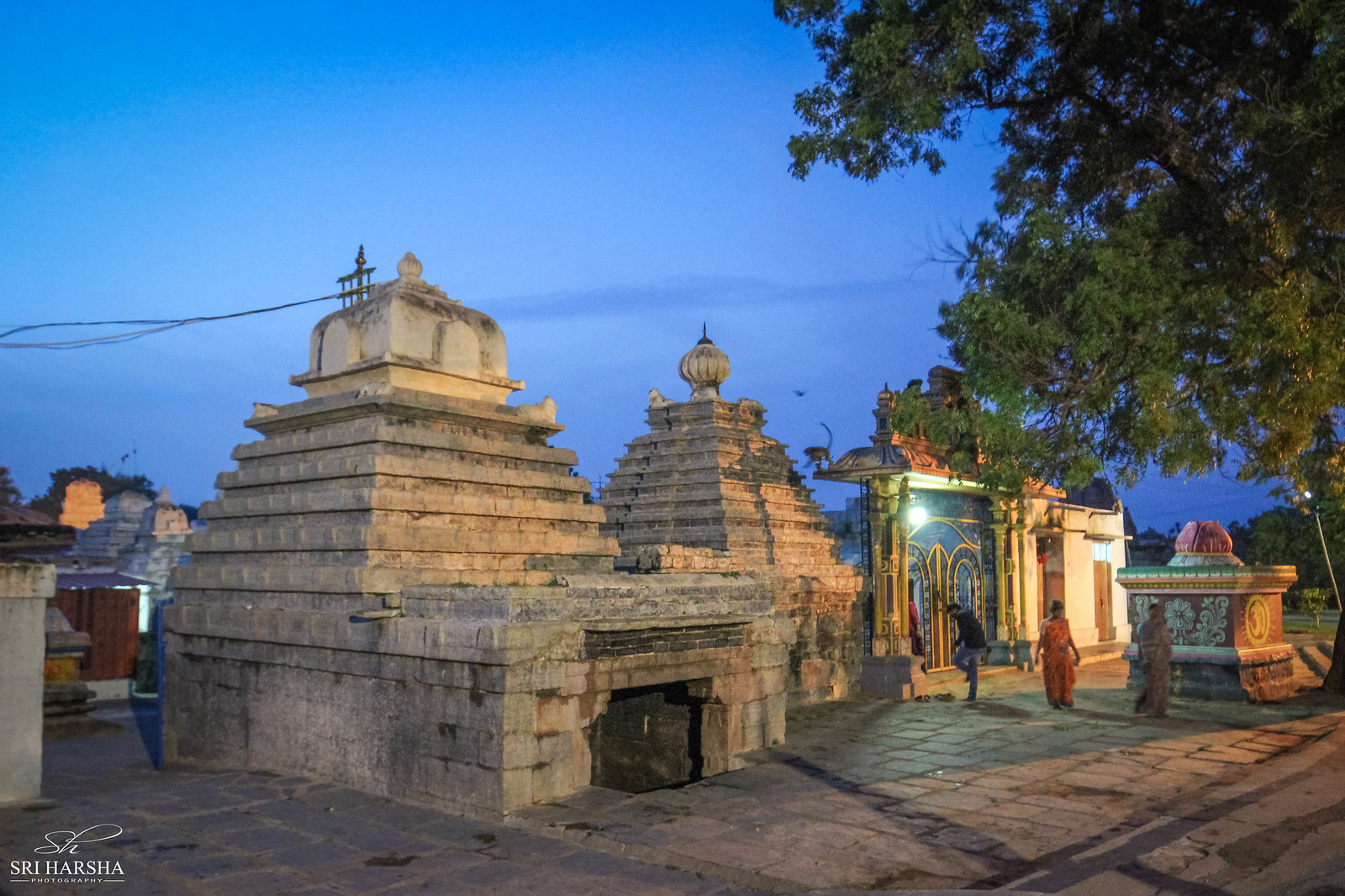
Near Alampur, is Papanasam with a cluster of over 20 temples of varying sizes and styles. The most important of these is the Papanaseswara temple.
Jogulamba temple
Jogulamba (also known as Yogulamba/Yogamba) is one of the eighteen Shakti peethas. Oordhva danta pankti (Upper jaw with tooth) of devi fell here. She is the Shakti of Bala brahmeswara swamy. Jogulamba mahadevi, Roudra veekshana loochana, Alampuri sthita mata, Sarvartha phala siddhida.
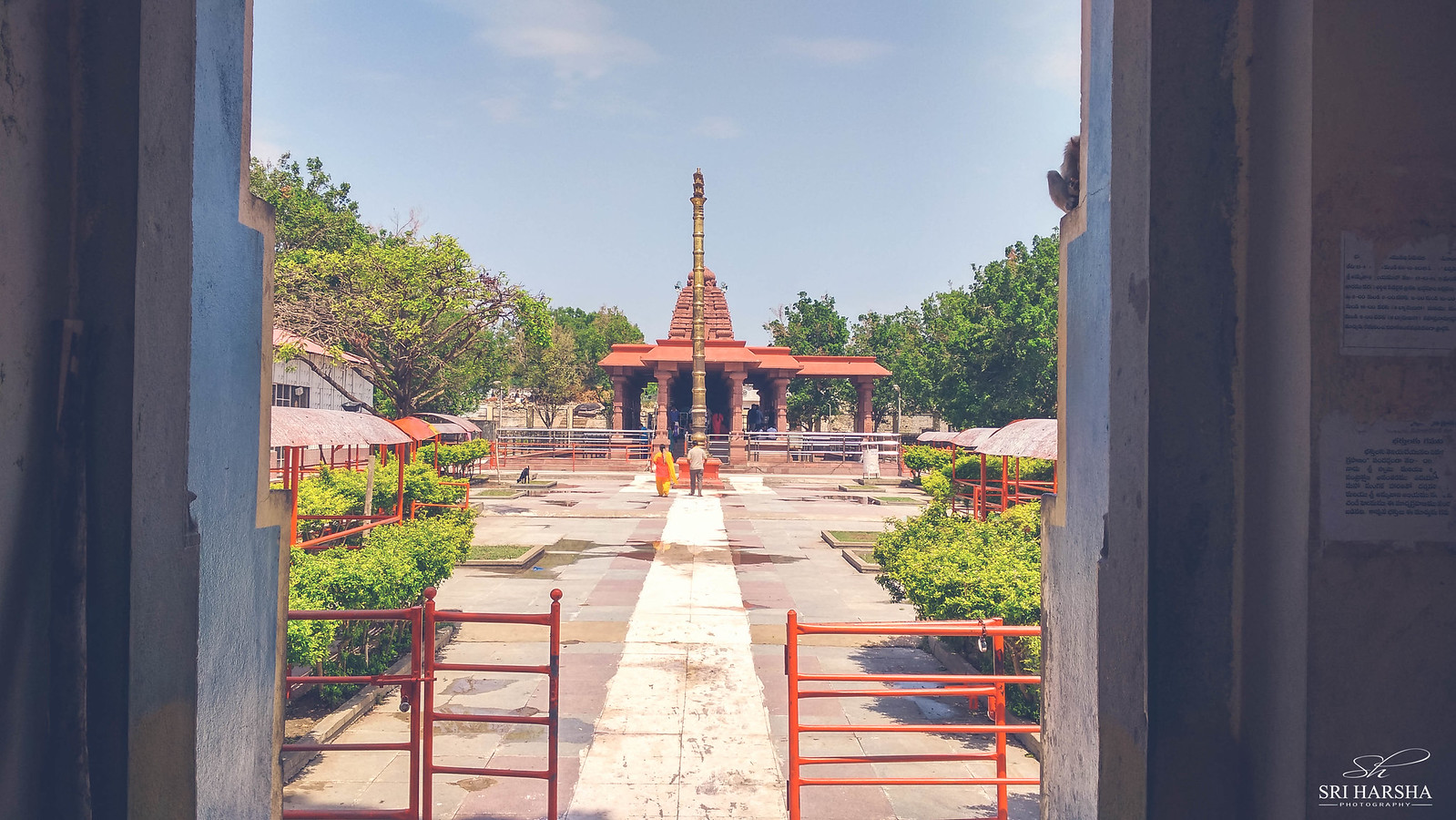
Jogulamba temple is located in the South-East corner of the village beside Tungabhadra river. Old temple of Jogulamba was destroyed by Bahamani sultans in the 14th century. The idols of Jogulamba and her two shaktis Chandi, Mundi were protected from them and placed in Bala brahmeswara swammy temple until 2005. The new temple constructed in the same place and the goddess was relocated. As per the local people Jogulamba is an Ugra rupa (highly energetic and hard to worship) and the water pool nearby it makes the atmosphere cool.
Idol of Jogulamba is in sitting position has huge amount of hair with lizard, scorpion, bat and a human scull in it. Idols of Saptamatrikas, Vighneswara and Veenapani veerabhadra are also present. Original Chandi Mundi idols were left in Bala brahmeswara swammy temple and new idols are made and placed in Jogulamba temple.
Jogulumba.
The entire temple complex was built on the bank of Tungabhadra river. Temple of Nava brahmas and Kanchi Kamakshi are most important.
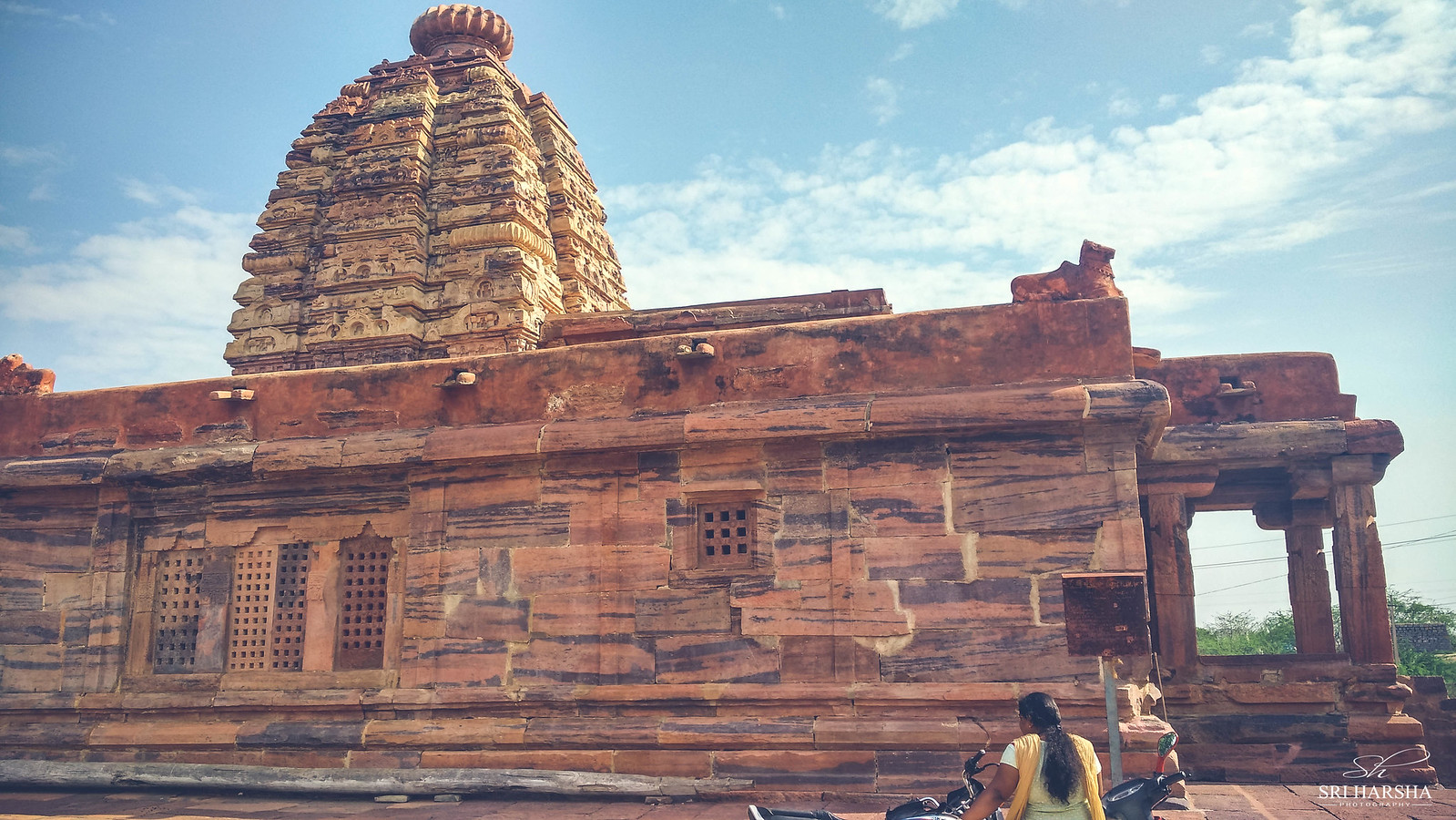
The Jogulamba devi shrine as a Shakti Peeth Shiva carrying the corpse of Sati Devi The Yogamba (Jogulamba) temple is regarded as a Shakti Peetha where Sati Devi’s upper teeth fell. The mythology of Daksha yaga and Sati’s self immolation is the story of origin of Shakti Peethas.
Shakti Peethas are shrines which are the most divine seats of the Mother Goddess. The body parts of the corpse of Sati Devi has fallen in these places, when Lord Shiva carried it and wandered throughout Aryavartha in sorrow.
There are 51 Shakti Peeth linking to the 51 alphabets in Sanskrit. Two Groups of Temples Brahmesvara and Papanatha are the 2 groups of temples on either side of Alampur. In 7th century AD Badami Chalukyas built these temples. The temples are not exactly in the Dravidian style but in Nagara style of architecture.
The shikharas of all these temples have a curvilinear form and are adorned with the miniature architectural devices. The plans and decoration similar to that of the rock cut temples (found in Karnataka and Maharashtra).
An Archaeological facility nearby has many fascinating pieces of stone carvings and statues of various mythological characters.
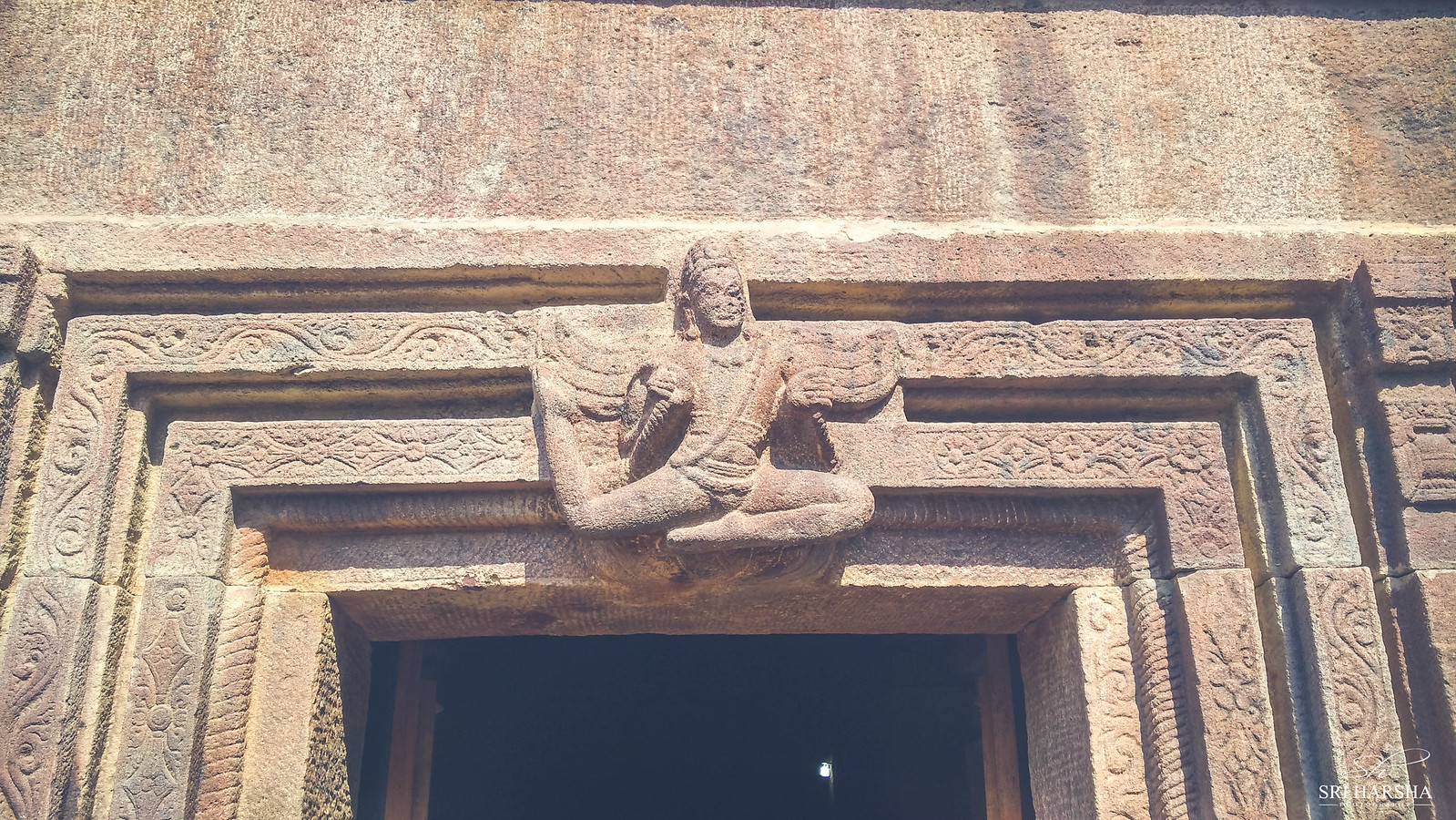
Brief History :
As per history of this place, Lord Brahma, after losing his powers due to a curse of a saint, performed penance for Lord Shiva. It is believed that Lord Shiva appeared in nine different forms, thus nine different temples to celebrate each form. The shivalinga in the main temple of Bala Brahma temple is seen in the form of footprint of a bull.
Jogulamba Temple is very ancient and one of 18 Maha Shakti Peethas of Goddess Shakti. This temple is 5th Shakti Peetha representing Upper teeth part of Goddess Shakti. The current temple of Jogulamba was built in 2005 as the original temple was destroyed. The idols of Goddess were places in Bala Brahmeswara temple for 6 centuries.
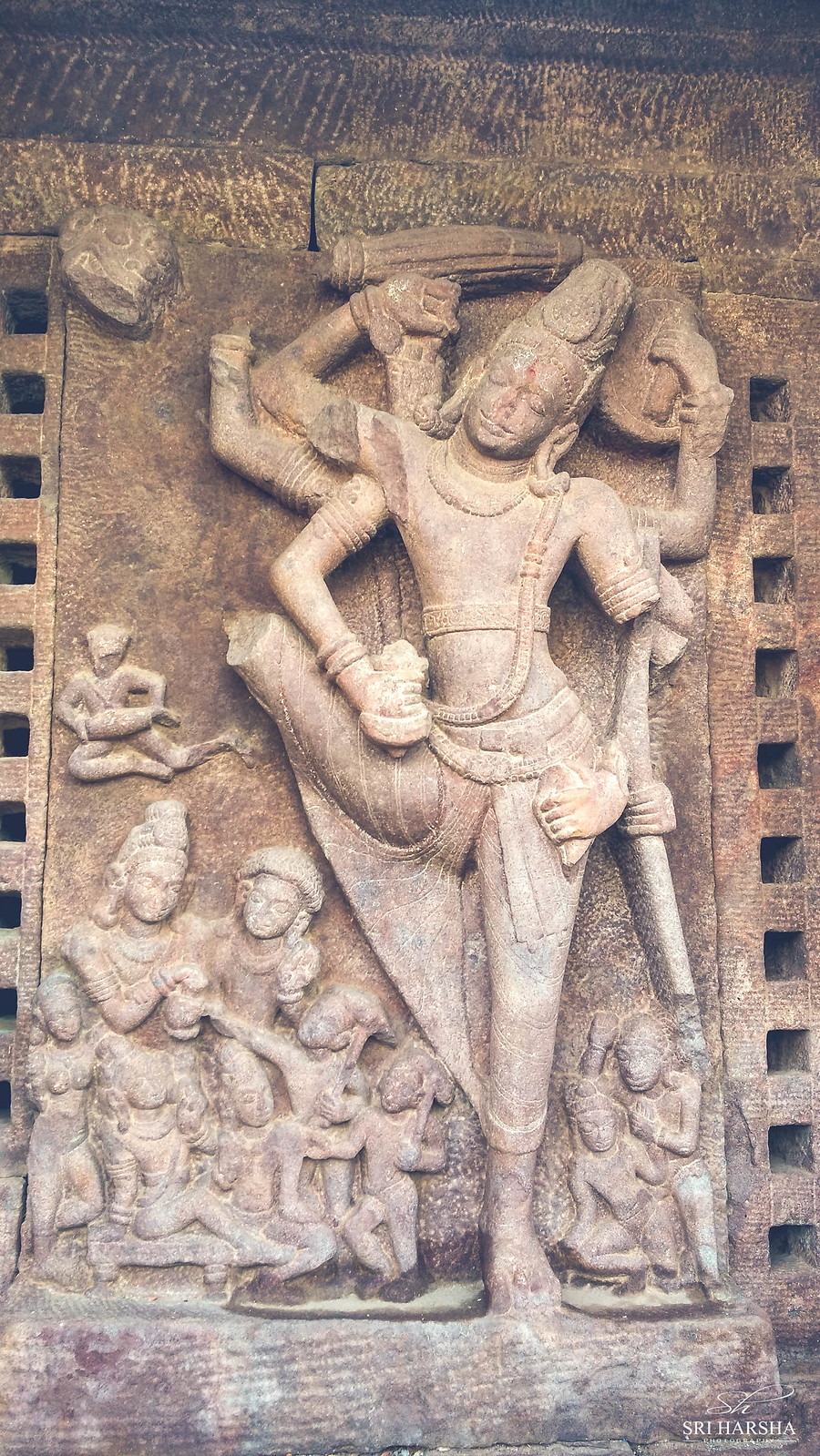
Chalukyas, who ruled this area from Badami for over two centuries, constructed nine magnificent temples called Navabrahma temples along with Sangameswara Temple between 640 AD and 753 AD. The temple construction was initiated by Chalukya King Pulakesi II during his visit to Alampur while returning to Badami after his victory over Pallavas of Kanchi. Later, the rulers of Rashtrakuta and Kalyani Chalukya Empires have contributed to the enhancement of these temples.
Sangameswara Temple is about 2 Kms from Navabrahma temples site.
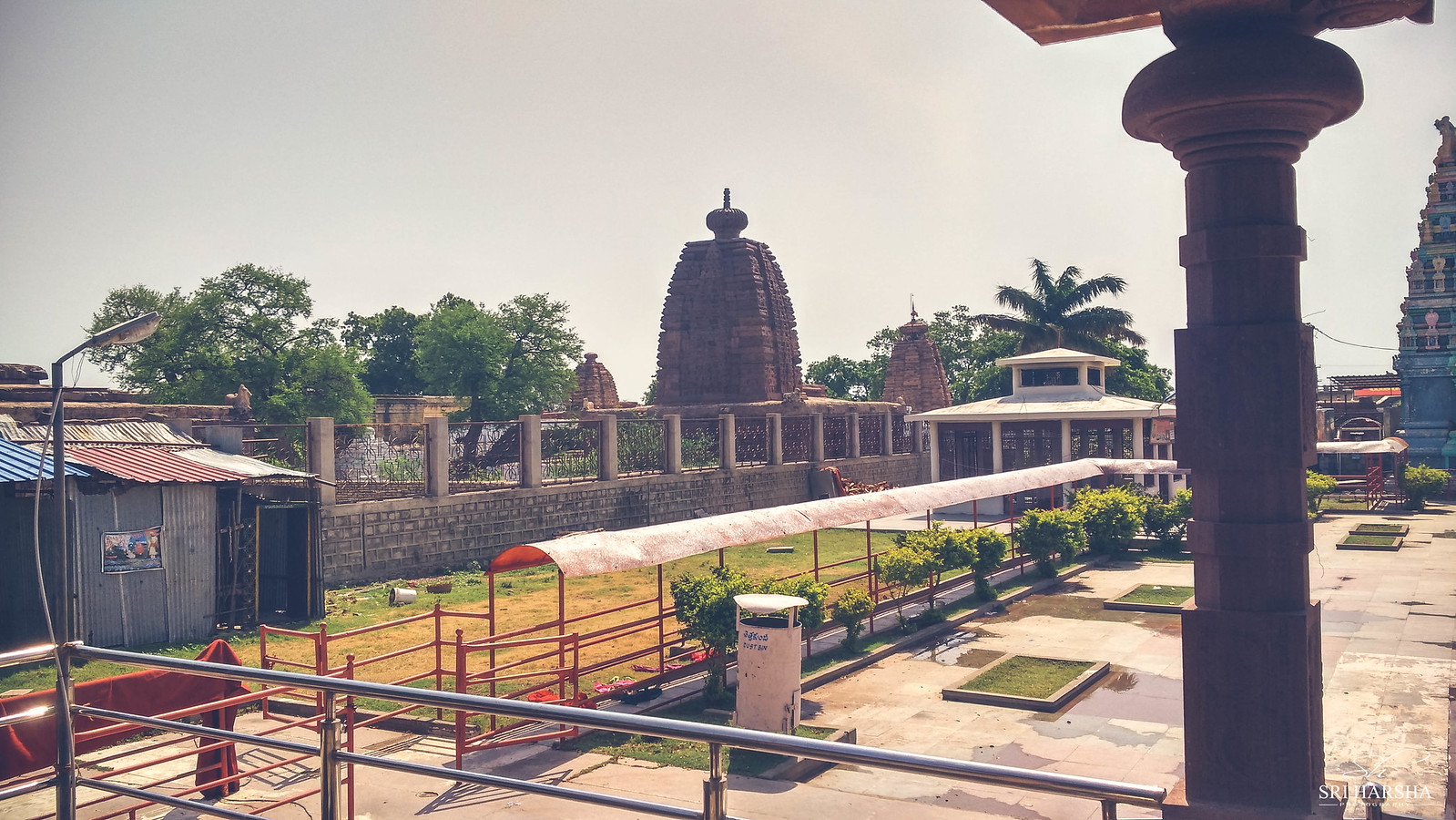
The original Jogulamba Temple and Taraka Brahma Temple were completely demolished by Bahamani Sultan army towards the end of 14th century. Vijayanaraga king Harihara Raya sent his army to stop the plunder of Bahamani Sultan’s army and fortified the temple complex to stop further attacks on the temple.
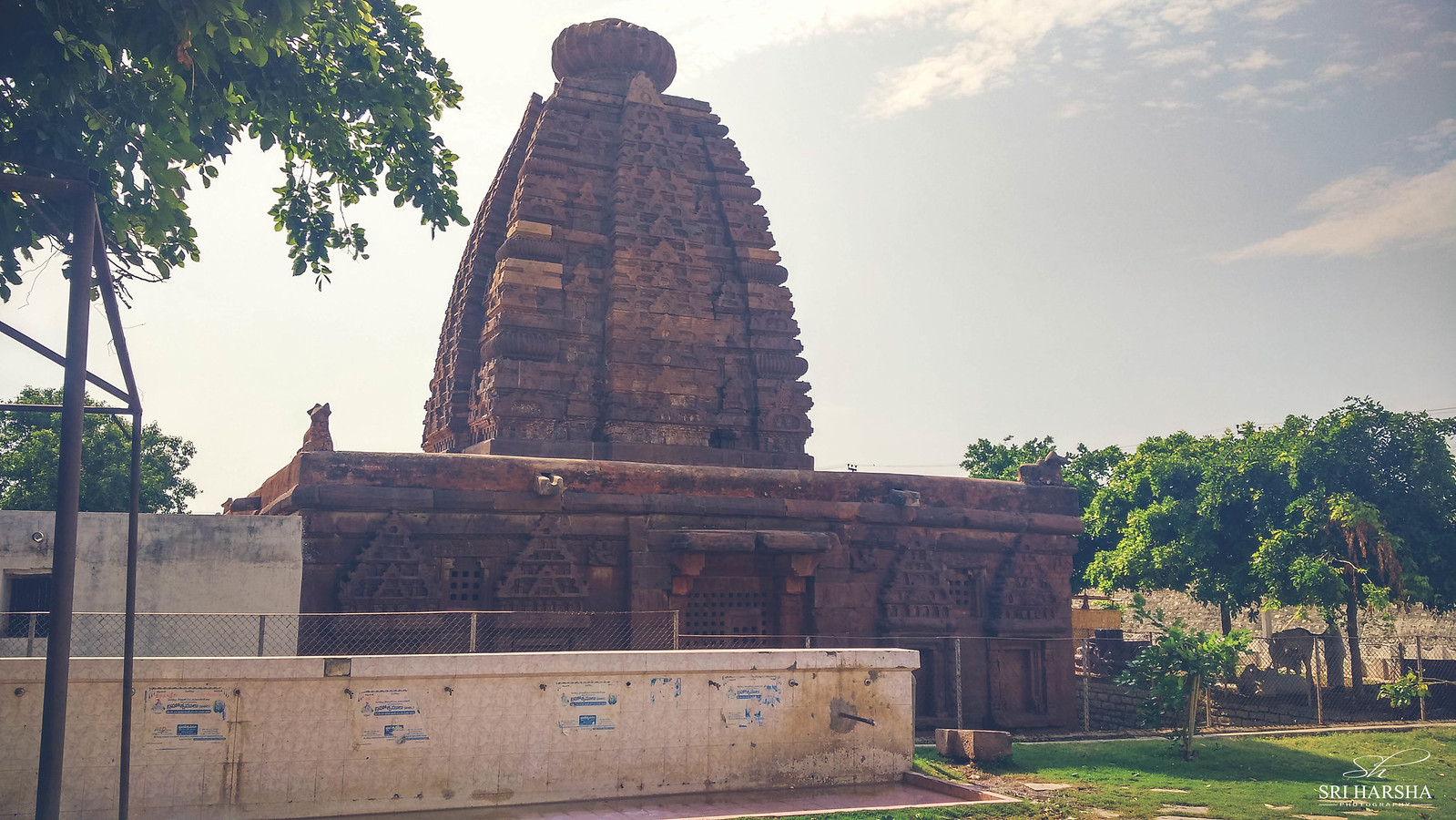
It is located at about 90 km from Mahabubnagar, 27 km From Kurnool and 200 km from Hyderabad.

More pictures here
Location
